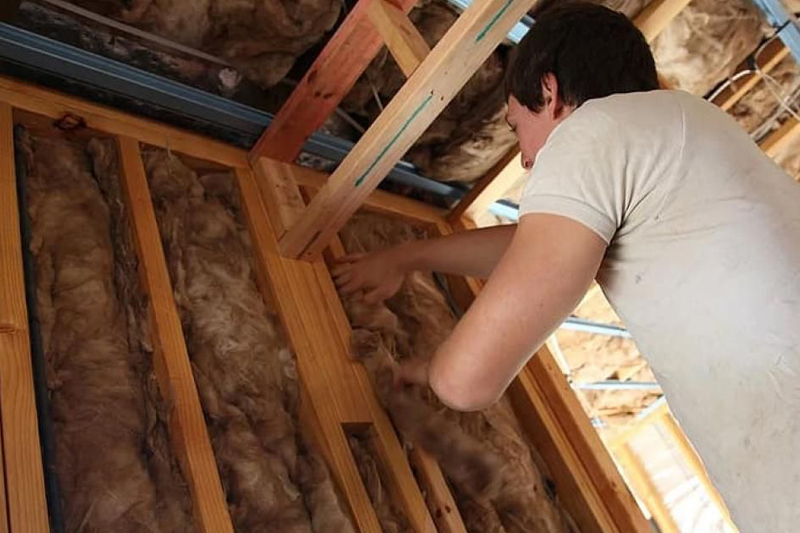Insulating your home is crucial to keeping it comfortable and energy-efficient, no matter what season it is. If you haven’t given much thought to your home’s insulation before, now is the time to do so. This guide will provide tips on improving the insulation in your home.

Why Insulate Your Home?
Investing in insulation for your home is a great way to reduce energy costs and impact on the environment. Not only does it improve the comfort of your home, but it also helps conserve energy sources needed to fuel our larger society. Insulation helps keep the inside of the home at a constant temperature, meaning you’re not overusing your HVAC system and wasting energy every time you switch from heating to cooling. Plus, many insulation options use recycled materials, making them highly sustainable and important for any green remodel. Insulation is an easy way to make your home more efficient without sacrificing quality or comfort.
Know Your Home’s Insulation Needs
It’s important to know what your home needs in terms of insulation. Every home is different, and each requires its own set of insulation solutions. Conducting a home energy audit is the best way to determine what kind of insulation you need. A professional auditor can test your home’s insulation levels and identify areas where additional insulation may be necessary. In addition to telling you what kind of insulation your home needs, they can also recommend ways to improve your home’s energy efficiency and reduce the amount of energy it consumes. Once you know your insulation needs, it’s time to start shopping for the right products.
The Type of Insulation Matters
When it comes to improving the insulation in your home, one of the first things to consider is the type of insulation you need. Different materials are better for certain parts of your home than others. If you are still unsure which insulation you need for a particular part of your house, consult a professional contractor for advice.
Here are some common types of insulation materials:
-
Fiberglass
Fiberglass is a popular choice for wall and attic insulation, as it can be easily installed and is quite effective at trapping heat. It also has great soundproofing qualities.
-
Cellulose
Cellulose insulation consists mostly of recycled paper products treated with fire retardants and insect repellents. It’s especially effective at trapping air between its fibers, making it an excellent choice for attics and walls.
-
Spray Foam
Spray foam is another popular insulation material sprayed directly onto surfaces like ceilings or walls. It expands to fill any gaps or cracks in the surface. It’s highly effective at trapping heat and can be used indoors and outdoors.
Consider Installing Solid Window Shutters
Shutters effectively block out light, reduce heat gain, and keep air from escaping through windows. Installing shutters is relatively easy, and they come in various materials and styles, so you can find one that fits your home’s aesthetic. When installing solid window shutters, make sure they are sealed properly and aligned with the window frame to ensure they do their job of blocking light and air. If you need help installing shutters, consider hiring a professional or consulting a window shutter retailer for guidance.
Check Doors & Windows for Drafts
Another major source of heat loss in many homes comes from drafts around doors and windows. If gaps or cracks exist, warm air will escape back out again. Check all frames around doors and windows carefully for any signs of drafts, if there are any present, use caulk or weatherstripping to seal them up tightly. Make sure they aren’t too tight, though. You don’t want them blocking out fresh air. If necessary, consider replacing old windows with more thermally efficient models. This may cost more upfront but could save you money on heating bills over time.
Insulate Your Attic
The attic is one area where heat loss can be particularly noticeable, so insulating this space should be a priority when you’re looking to improve your home’s overall energy efficiency. Make sure that all holes or leaks in the roof are sealed up before installing any insulation material, as this will prevent hot air from escaping through these gaps and ensure that the insulation does its job properly. Also, check for signs of moisture buildup or mold growth in these areas. These problems can cause serious damage to your property if left unchecked.
By following these simple steps, you can significantly reduce heat loss from your home, saving money on energy bills while still staying cozy inside. No matter what house you have or what type of climate you live in, proper insulation will help keep your living space comfortable year-round while reducing wasted energy usage.
Like this post? Subscribe to this blog by clicking HERE.
Let’s stay connected:
1 thought on “How to better insulate your home”